Have you ever experienced a chill on a dark, still night? That’s the lingering whisper of Ah Puch, the Maya god of death, making his presence known. He ruled over Mitnal, or as we know it – the ninth hell in Maya mythology.
An eerie skeletal figure with eyeball bells and owl companions to boot, this was no deity to be trifled with. His story isn’t just about dread and darkness, though. There’s much more beneath those hollow eye sockets.
In our journey today, we’ll uncover ancient lore steeped in mystery and terror yet fascinatingly complex – from Ah Puch’s rivalry with Itzamna to his significance across various Mesoamerican cultures. In doing so, you’ll discover why owls were essential symbols for him and how modern media has reimagined this powerful deity.
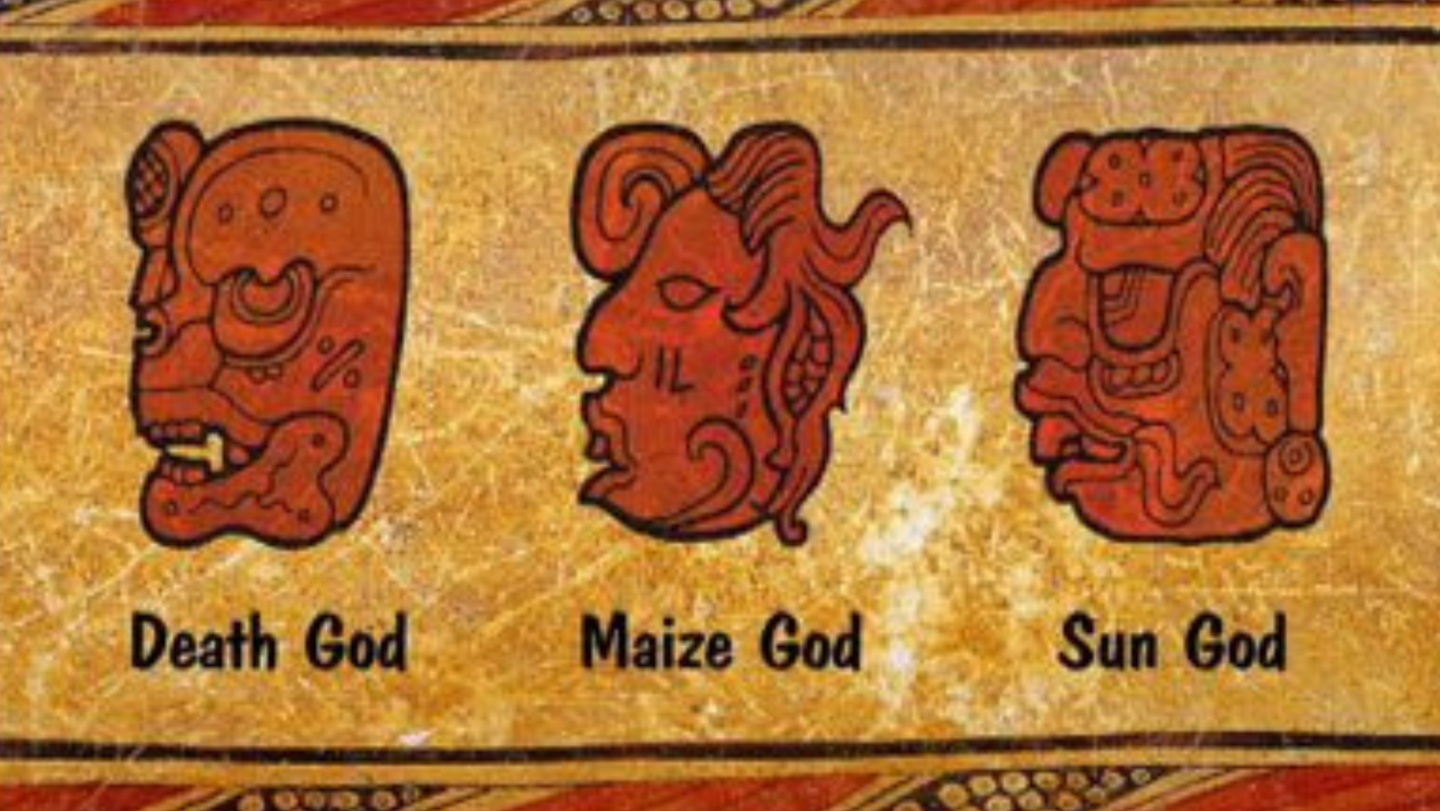
Table Of Contents:
- Understanding Ah Puch in Mayan Mythology
- Depictions and Symbolism of Ah Puch
- The Role of Owls in Representations of Ah Puch
- Comparing Ah Puch to Other Death Deities
- Ah Puch in Popular Culture and Media
- Mourning Rituals and Beliefs Related to Ah Puch
- The Influence of Ah Puch on Contemporary Society
- FAQs in Relation to Ah Puch
- Conclusion
Understanding Ah Puch in Mayan Mythology

In the tapestry of Mayan religion, one figure stands out as particularly fascinating and chilling. That figure is Ah Puch, also known by his other name, Yum Cimil. Known primarily as a god of death, he was seen not only as a harbinger of doom but also paradoxically associated with beginnings.
The Domains of Ah Puch
Ah Puch reigned over various realms according to ancient Mayan beliefs. Most notably among these were darkness and disaster, domains that might make any mortal shudder at their mere mention. However, this deity’s influence extended even into areas we typically associate with life – childbirth and beginnings.
This dual association reveals the complex nature inherent within Mayan mythology, where life and death are intertwined elements rather than distinct entities. To further illustrate this point, let’s take a quick detour into an analogy from modern science. Quantum Mechanics proposes particles can exist simultaneously in multiple states until observed. This is eerily similar to how the ancients perceived their gods like Ah Puch.
Ah Puch and Itzamna
Despite being considered one of the more feared deities in the pantheon due to his connection with death, it may come as a surprise that there existed rivalries among the gods themselves. One such notable rivalry was between our subject matter for today – Ah Puch (or Yum Cimil) and another influential deity named Itzamna.
Serving essentially polar opposite roles within society – Itzamna, a patron god and considered the founder of Mayan culture. On the other hand, Ah Puch stood as the harbinger of death. So, it’s no surprise they were often seen at odds with each other. Their competition echoes throughout numerous myths within Mayan mythology.
In fact, understanding these gods, their domains, and their relationships provides us with a unique lens into ancient Mayan society and belief systems.
Key Takeaway:
Peering into Mayan mythology, we meet Ah Puch, a god of death also linked with beginnings. This deity ruled realms like darkness and disaster but had influence in life-related areas, too – think childbirth. Intriguingly similar to modern Quantum Mechanics’ principles, this dual association shows how the Mayans saw life and death as intertwined elements.
Depictions and Symbolism of Ah Puch

The ancient Mayans held a powerful fascination with death, reflected in their deities. One such figure is the chilling deity known as Ah Puch, recognized by his skeletal figure.
Images of Ah Puch were anything but subtle. His form was typically portrayed as a putrefying body, mirroring the stages of decomposition after death. From depictions showcasing protruding ribs to others suggesting bloated figures, these artistic interpretations are thought to emphasize his role as the god who ushers souls into the afterlife.
The symbology didn’t stop there, though. A recurring motif found alongside this haunting visage was that of owls. These creatures are often associated with wisdom or prophecy in other cultures but are symbols of imminent death for the Maya. Interestingly enough, one depiction even went so far as to portray Ah Puch with an owl’s head on top of his skeletal frame.
If you’re curious about how another Mesoamerican culture viewed their own version of a ‘god-of-death,’ then it would be worth your time to check out Mictlantecuhtli: God Of Death In Aztec Religion. Like our dear friend Ah Puch here, Mictlantecuhtli also has some rather macabre iconography associated with him.
Anatomy Of An Underworld Deity
Many images show our gloomy deity bearing a strong resemblance to what we might think when imagining reanimated corpses – shambling undead bodies covered in black spots suggestive of not just decay but rotting flesh itself, grim evidence reinforcing again that life beyond human eyes had its terrifying aspects in Mayan beliefs.
It’s not all decay and gloom, though. The symbolism of Ah Puch also held some intriguing surprises. Among them is the unexpected but prevalent association with owls. Known for their nocturnal nature and haunting hoots, these birds were thought to serve as his messengers or companions in the afterlife – an eerie addition to an already intimidating god.
Key Takeaway:
Mayan deity Ah Puch, often portrayed as a decaying body, symbolizes the grim reality of death. This god who guides souls into the afterlife is frequently depicted with owls—creatures that signify imminent demise in Mayan culture. While his imagery might be chilling, it provides an intriguing glimpse into ancient beliefs about life beyond our mortal coil.
The Role of Owls in Representations of Ah Puch
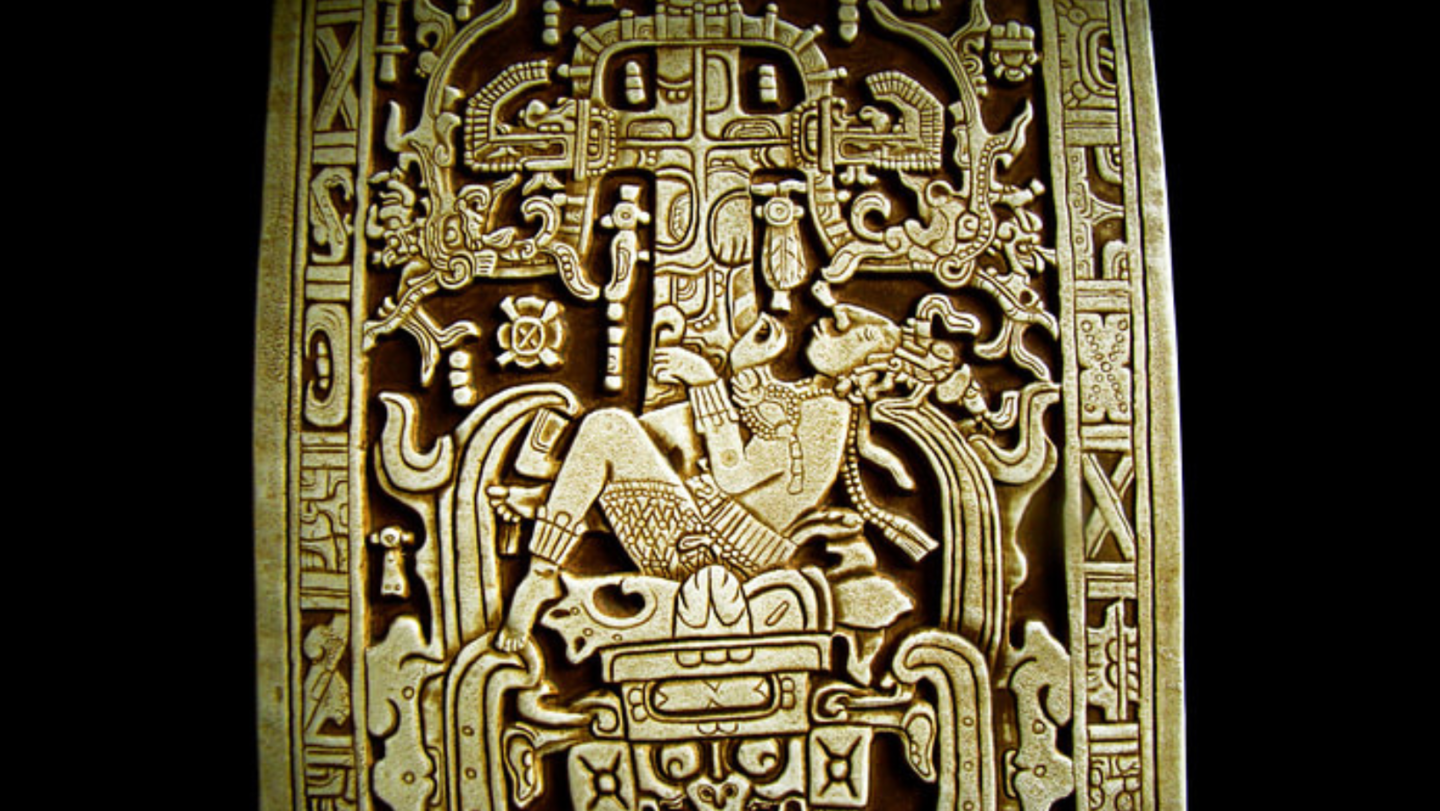
In Mayan mythology, the presence of owls is strongly linked with Ah Puch, often known as the flatulent one. He’s not just any deity; he presides over death and symbolizes a stark reminder to all about life’s inevitable end.
But why owls? In fact, the answer lies within ancient Mayan beliefs. In their worldview, these nocturnal creatures were considered lesser demons or messengers from Xibalba – the Mayan underworld. Thus, they became deeply associated with this god, who could even be portrayed as a skeletal figure bearing an owl’s head.
Owl Imagery and Symbolism
As representations evolved over time, artists depicted Ah Puch in myriad ways that went beyond his association with owls. However, this imagery remains pivotal due to its powerful symbolism.
In some depictions, you might see him wearing bells made out of human eyes dangling around his neck. Those are called eyeball bells by historians.
His most chilling portrayal perhaps shows empty eye sockets peering into eternity. Yet another signifier that reinforces our mortal fear that death sees us all.
A Nighttime Warning?
Ancient Mayans believed when they heard owl screeches at night, it was no random event but rather signals sent by Ahal Puh himself warning them about impending doom.
It’s said these hoots captured puch Mayan hearts like nothing else, causing palpitations driven more by spiritual concern than physical discomfort.
The Messenger Deity Reimagined
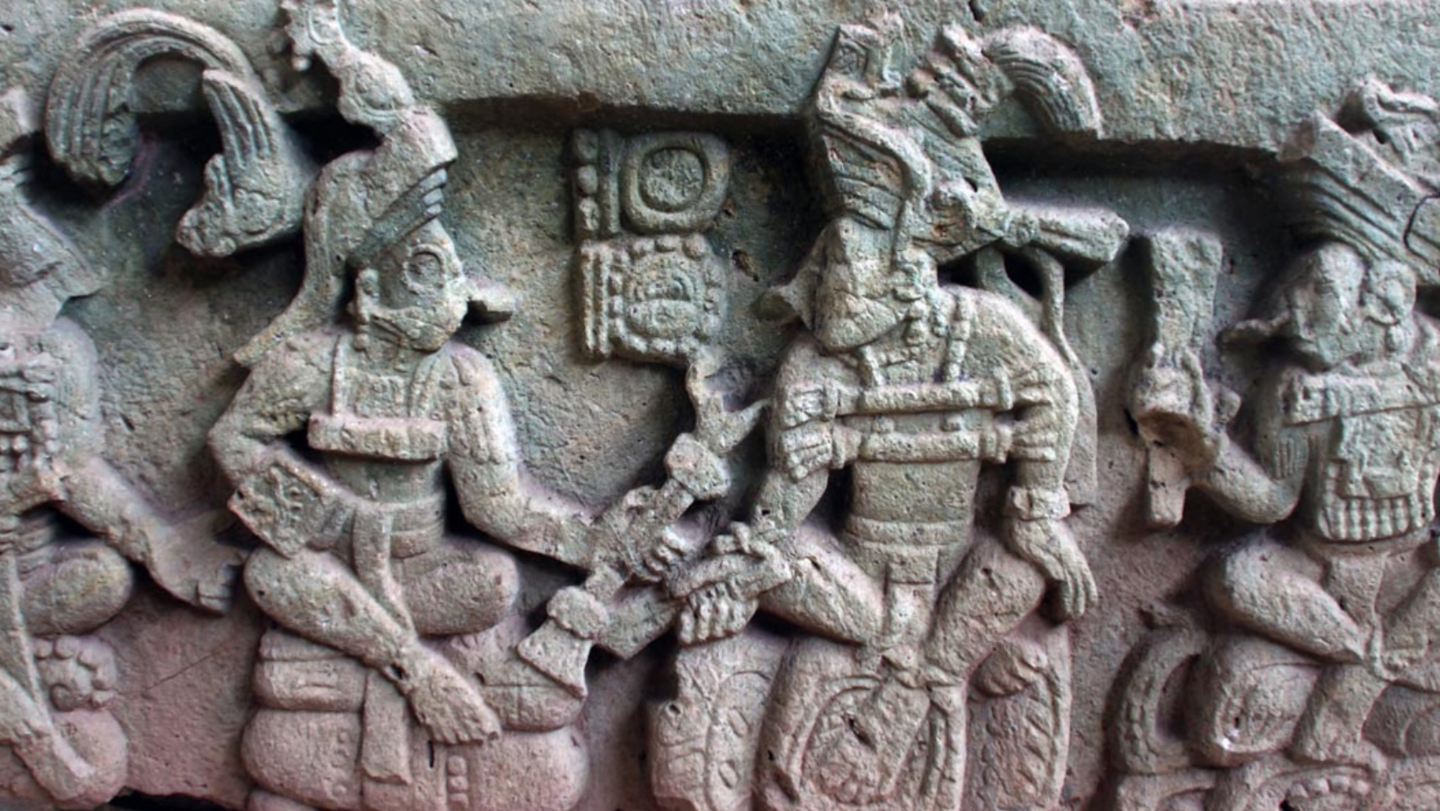
Ah Puch had several names in the Mayan pantheon, such as Yum Kimil or Ah Cizin. The variety in his naming only underscores the multifaceted nature of this deity.
Today, we can see a similar diversity in how different cultures perceive owls – some consider them wise, while others link them to darker forces.
So next time you hear an owl’s hoot at night, remember it could be more than just a simple call of the wild. It might carry secrets from nature waiting to be unveiled.
Key Takeaway:
In Mayan mythology, Ah Puch is the god of death, and he’s deeply linked with owls. These night birds are seen as messengers from the underworld, emphasizing their dark nature and role in heralding life’s unavoidable conclusion. Whether you see him depicted with an owl’s head or a nighttime hoot sends chills down your spine, remember it serves to remind us all of our own mortality.
Comparing Ah Puch to Other Death Deities

Ah Puch, the Mayan god of death (death deity), shares striking similarities with other Mesoamerican deities. However, his unique characteristics set him apart from counterparts like Mictlantecuhtli, an Aztec equivalent.
The most glaring similarity is their association with death and the underworld. Both gods rule over a realm filled with terror and despair – what we’d consider hell in contemporary terms. But while Mictlantecuhtli governs Mictlan, the lowest level of the Aztec afterlife, Ah Puch rules Mitnal or the ninth hell according to Yucatec Maya belief.
In Quiche Maya tradition, too, he’s known by another name: Yum Kimil. He reigns supreme over Xibalba – a terrifying place marked by trials and tribulations for departed souls. Thus, these realms across different cultures hint at shared beliefs about life after death in ancient civilizations.
Differences between these deities lie mostly in their depictions. While both are associated with skeletal imagery signifying decay and the end of the life cycle, there’s variation, too. For instance, one representation portrays Ah Puch as having eyeball bells dangling off his body. A strange yet intriguing feature that distinguishes him from other gods.
The rivalry between Ah Puch and Itzamna adds more depth to our understanding of Mayan mythology, where dualistic concepts prevailed: life versus death or creation against destruction (Buluc Chabtan, anyone?). Moreover, such complexities aren’t found in Aztec mythology, making Ah Puch’s role more nuanced.
Also noteworthy is Ah Puch’s connection with owls. Often depicted as his messengers or symbolic of his presence, they’re an integral part of his iconography. However, this contrasts sharply with Mictlantecuhtli, who has no such animal association and underscores the distinct nature of Mayan death god imagery.
Thus, we must continue understanding these unique cultural perspectives. They reveal how each culture saw life after death and the divine beings in charge.
Key Takeaway:
His role in Mayan mythology goes beyond the typical god of death. Ah Puch’s unique attributes, like his association with owls and his distinct eyeball bells, make him a fascinating figure to study. His realm isn’t just about despair and decay—it also delves into more complex themes that give us deeper insight into Mayan culture.
Ah Puch in Popular Culture and Media

As an intriguing figure from Mayan mythology, Ah Puch has found his way into various forms of modern media. Notably, he features as a playable god in the video game SMITE. In this depiction, he is portrayed not just as the lord of death but also as a deity of true evil.
The creators at Hi-Rez Studios took some liberties with Ah Puch’s portrayal, though. They have designed him with unique abilities that reflect his dark domain. Then, each ability used in-game is accompanied by a haunting visual effect and taunt line that encapsulates the terrifying nature of this ancient deity.
For example, in one such instance, upon casting ‘Empty The Crypts,’ Ah Puch releases undead minions who seek out enemy players. Following this, as they march forward to do their master’s bidding, you can hear chilling owl screeches – harking back to Ah Puch’s association with these nocturnal creatures in Mayan folklore.
This level of detail shows how even though centuries separate us from the original tales surrounding this character, we are still intrigued by his narrative today on platforms like social media, where gamers share their experiences playing as or against him.
Video Representation
To truly understand what makes SMITE’s interpretation so engaging for players around the world – especially those unfamiliar with ancient mythology – take a look at Hi-Rez Studios’ official God Reveal for Ah Puch on YouTube:
Popularity Among Players
Interestingly, Ah Puch’s portrayal in SMITE has made him a favorite among players. Due to the developers’ imaginative interpretation of his lore, combined with the game’s mechanics and aesthetics, provide an immersive experience that brings this ancient god to life.
In doing so, they are brought closer to history, in a sense. The creative blend of modern media and elements from ancient cultures makes for an engaging player experience. It’s not just about engaging in the activity; it also involves understanding the origins of these concepts.
Key Takeaway:
Interestingly, SMITE is also a unique cultural experience. It’s a thrilling mix of the past and present, bringing Mayan mythology to life in an unexpected way. With every owl-screech and haunting ability unleashed, players get a taste of Ah Puch’s terrifying power as they navigate through this immersive game world.
Mourning Rituals and Beliefs Related to Ah Puch

The ancient Mayans held strong beliefs about death, which greatly influenced their mourning rituals. Central to these practices was the god Ah Puch, ruler of Mitnal, the ninth hell in Maya mythology. This fearsome deity was believed to seize souls not sufficiently mourned by loved ones.
A crucial part of a funeral involved making loud mourning sounds intended as an audible deterrent for this skeletal-faced God A with his ominous eyeball bells. It’s akin to setting off car alarms at a prowling cat burglar’s approach; the goal is clear – keep away from our dearly departed.
Owl hoots were also considered significant during this period. The nocturnal birds were closely associated with Ah Puch and could be seen as lesser demons or even manifestations of the deity himself. So imagine being amidst that cacophony: human wails mingling with owl screeches in a desperate attempt to ward off spiritual predators.
It’s interesting how religious beliefs influence societal norms, isn’t it? Even more so when you realize such practices are rooted in deep fear rather than respect or love for divine beings like our flatulent friend here (no disrespect meant).
Paying Heed To Puch’s Attention
In addition to noisy vigils, other precautions included covering mirrors and water vessels within homes after someone passed away—measures taken presumably due to some connection between reflective surfaces and Ah Puch finding fresh souls—a bit extreme perhaps, but who am I judge?
To say death left black spots in daily life would be accurate since families performed cleansing rituals using specific plants to ward off lingering negative energies. And don’t forget to take a deep breath before entering the deceased’s resting place for fear of inhaling any remnants of death.
So there you have it: mourning rituals that go beyond simple expressions of grief and instead morph into strategic defenses against otherworldly entities. It’s like turning your home into an anti-Ah Puch fortress. Talk about some serious ‘home security’ measures.
Key Takeaway:
The Mayans’ fear of Ah Puch, the death god, shaped their mourning rituals. From loud wailing and owl hoots aimed at deterring this deity to covering mirrors after a loved one’s passing – it was all about warding off his attention. These practices transformed grief into strategic defenses against spiritual predators.
The Influence of Ah Puch on Contemporary Society
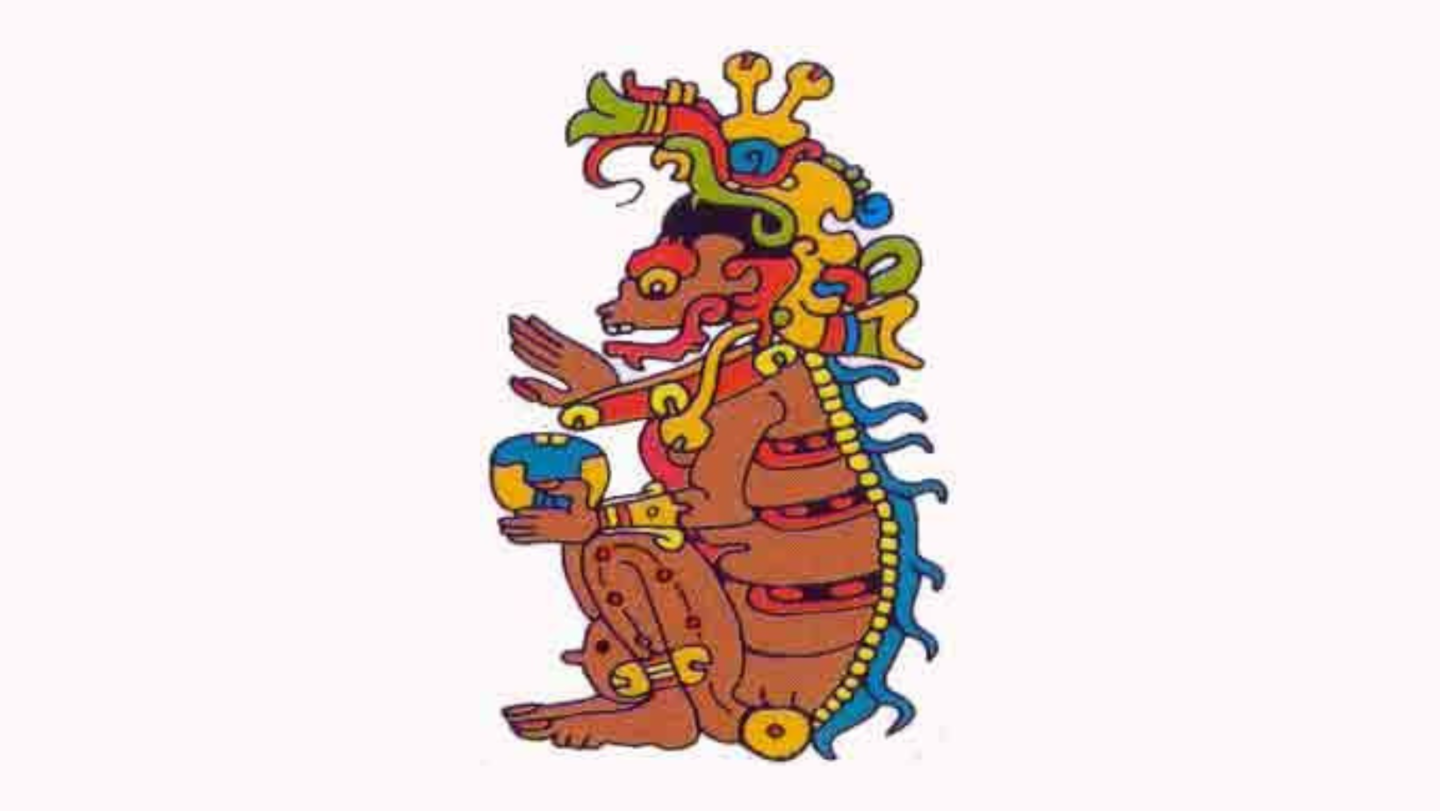
Despite being a deity from ancient Mayan mythology, the influence of Ah Puch is still felt in contemporary society. He has been absorbed into popular culture and media, shaping our modern interpretations and views on death and the afterlife.
The Impact on Modern Interpretations
A notable example of his enduring presence can be seen in modern video games, where he appears as a character embodying evil. His role in these digital realms often mirrors that within the ninth hell – a place associated with him in Mayan belief systems.
In fact, it’s not just video games; various forms of media have adopted elements related to this feared god. The portrayal of skeletons smoking or bloated figures covered with black spots owes much to depictions reminiscent of Ah Puch’s skeletal face or putrefying body.
This incorporation reflects more than just an aesthetic choice; it points toward how our collective consciousness perceives notions such as mortality and fear. From human eyes staring at gruesome horror movies featuring saurian conjurers straight out of some underworld realm ruled by Ah Puch himself to malware masters creating online nightmares inspired by tales about ‘The Flatulent One’ – all are examples reflecting the lingering echo of this Mayan God’s influence today.
We also find influences embedded deep within societal beliefs about death itself, which may unknowingly hark back to old fears regarding owl screeches or protruding ribs symbolic of decay – trademarks known from descriptions found around Ahal puh (another name for our focus).
To better understand why certain motifs persist over centuries while others fade away like dust before wind gusts require taking a deeper look into underlying cultural contexts affecting their survival. One reason could be our fascination with mystery, the unexplained, or fear of the unknown. These are all inherent aspects associated with deities like Ah Puch.
Wrapping up, even though Ah Puch’s roots are deeply ancient and his symbols may seem disconnected from our current reality, we can still feel his impact. This is evident in the way we understand and depict death today – a clear indication of Mayan mythology’s enduring influence on modern society.
Key Takeaway:
Even in our modern world, Ah Puch’s influence lingers. This ancient Mayan deity of death shows up in video games and movies, subtly shaping how we view mortality and fear. Our fascination with the mysterious and unexplained keeps his symbols alive, reminding us that even old myths can have a lasting impact on contemporary society.
FAQs in Relation to Ah Puch
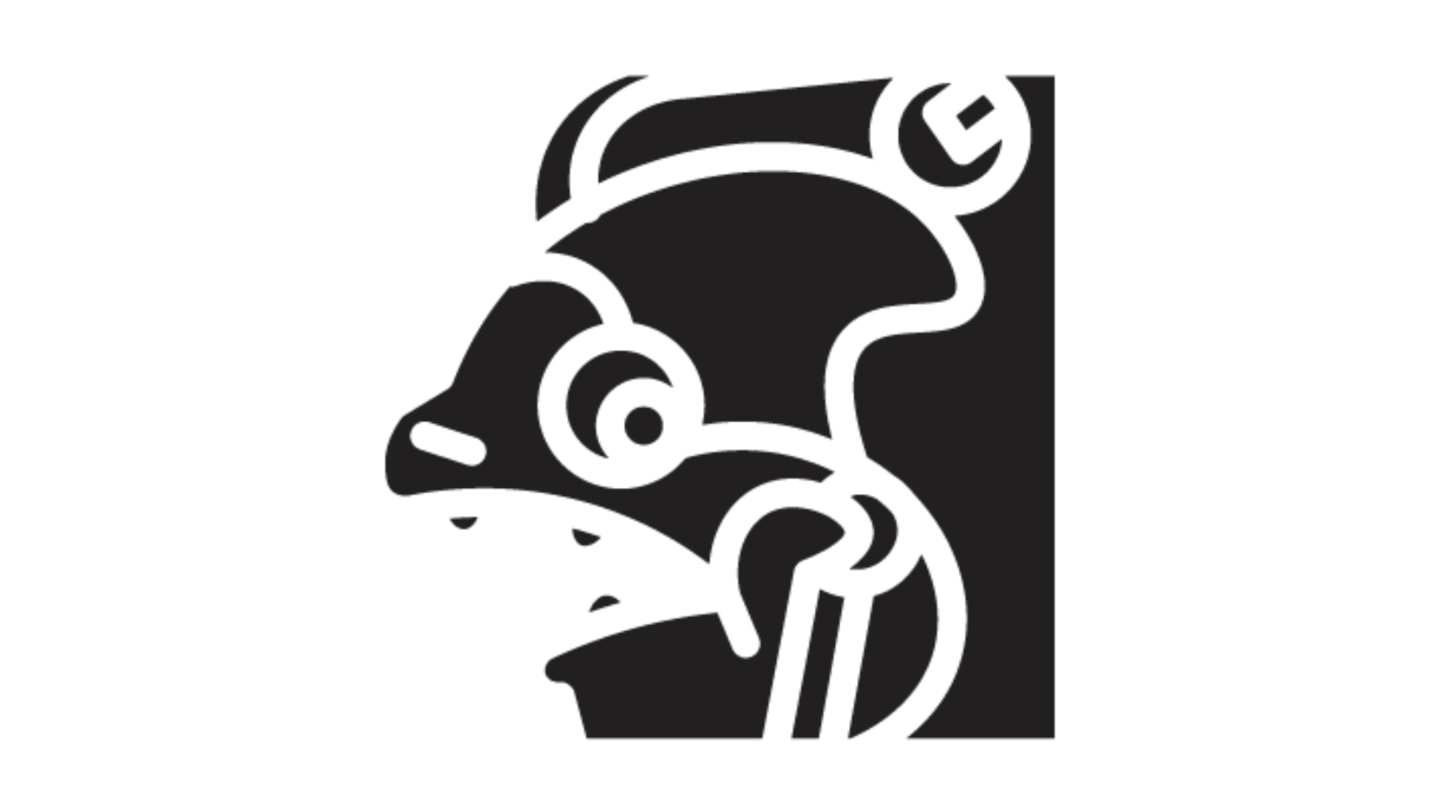
What does Ah Puch mean?
Ah Puch, in Mayan mythology, is the god of death and darkness. The name often symbolizes disaster and rebirth, too.
Who is Ah Puch from the Mayans?
Ah Puch is a prominent figure in Mayan mythology, known as their deity of death, disaster, childbirth, and beginnings.
What is the Aztec equivalent of Ah Puch?
The Aztec equivalent to Ah Puch would be Mictlantecuhtli. Both are revered as gods of death within their respective cultures.
Who is the Mayan god of the dead?
The ancient Maya worshipped Ah Puch as their god associated with death. He’s depicted often in skeletal form or decaying body imagery.
Conclusion
So, we’ve journeyed through the dark realms of Ah Puch, understanding his role in Mayan mythology. A god of death and darkness who commanded fear yet intrigue.
We dove into his skeletal depictions – a stark reminder of mortality and transience. Remember those owls? They were not just companions but symbols closely associated with him.
We compared Ah Puch to other deities across Mesoamerican cultures, unraveling the layers behind this enigmatic figure. From ancient art to modern media’s portrayal, he continues to fascinate us.
The mourning rituals related to Ah Puch have shown us how, even in grief, humans sought control over the supernatural; a lesson on resilience, perhaps?
In conclusion, respect your history because it shapes our present narrative – like how interpretations of Ah Puch influence today’s views on life after death!
Fascinated by Maya gods and culture? This article on the role of patron deities in classic Maya politics is a must-read!

